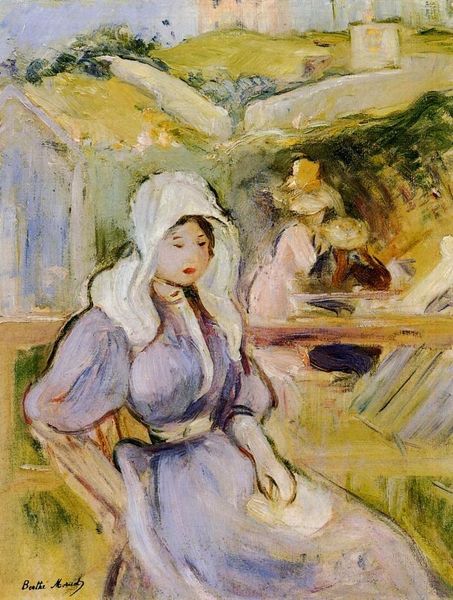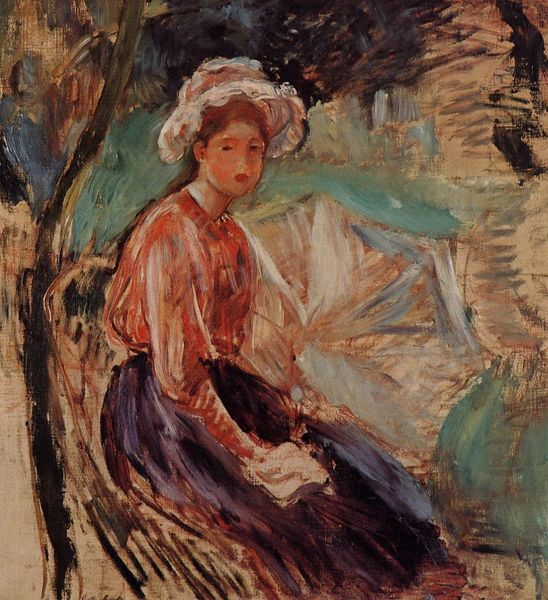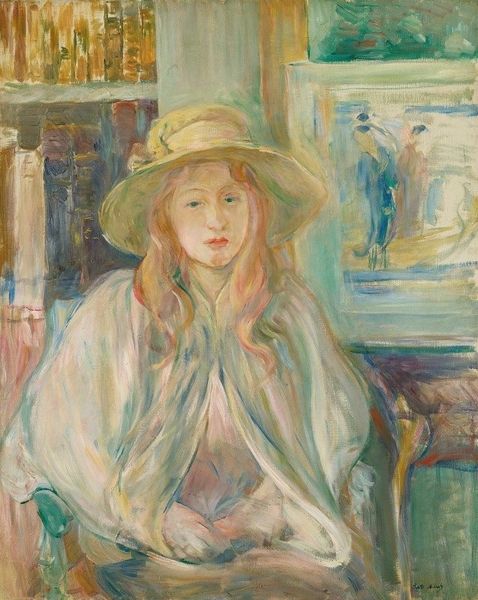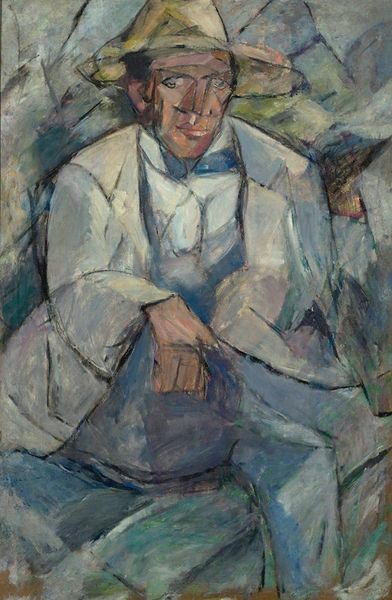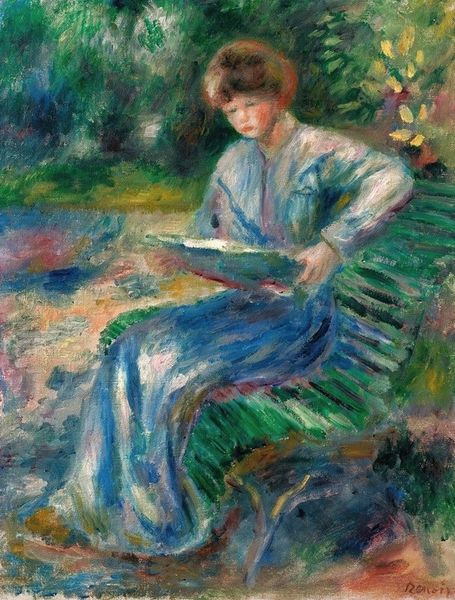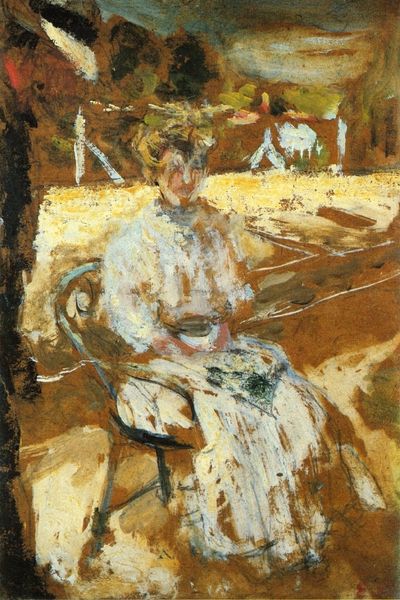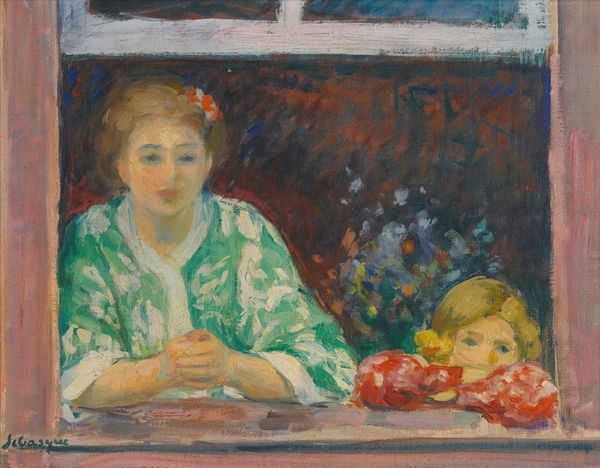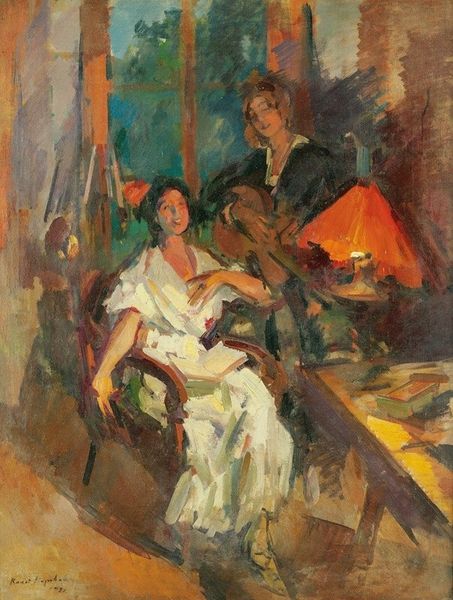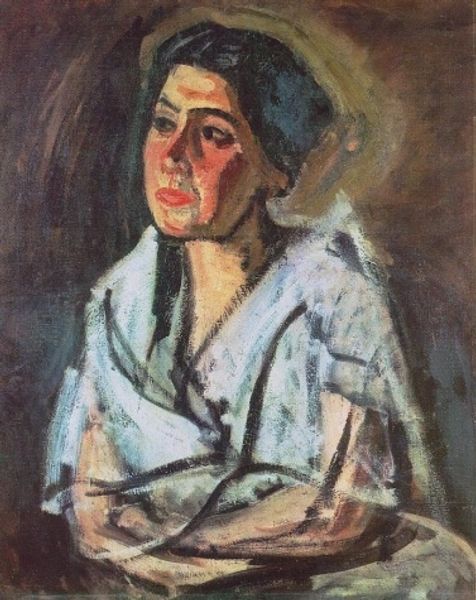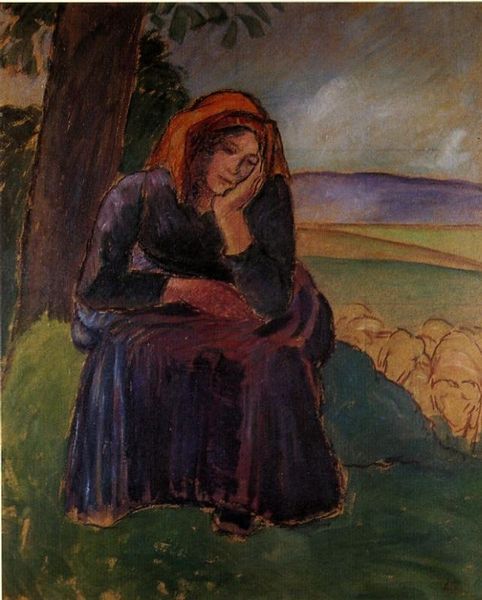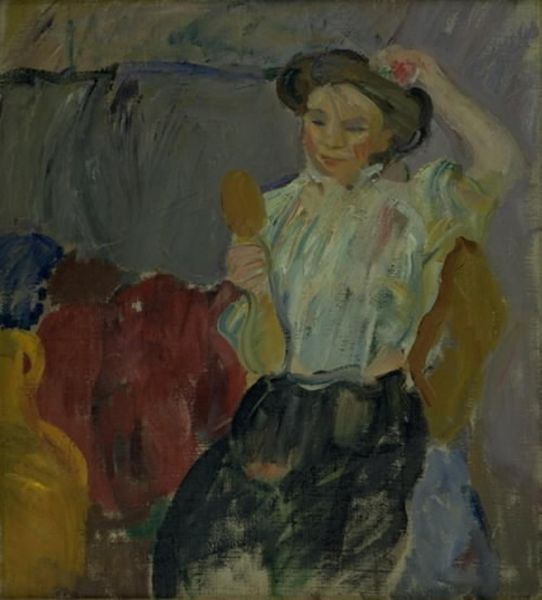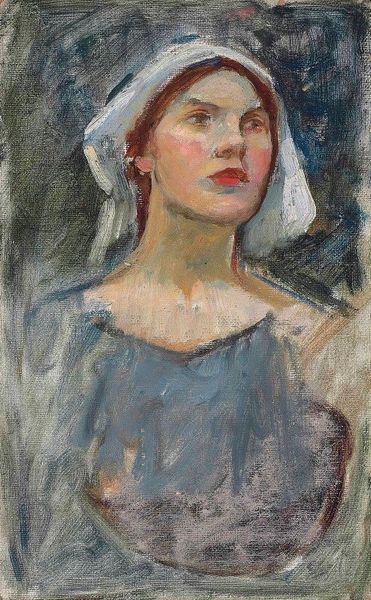
Copyright: Public Domain: Artvee
Editor: This is Berthe Morisot's "Sur La Plage à Portrieux," painted in 1894. It's an oil painting, and it feels incredibly intimate. I’m drawn to the way the figure seems lost in thought, separated from the lively scene behind her. What do you see in this piece? Curator: Immediately, I see how Morisot uses the image of the veiled or bonneted woman as a signifier. The bonnet carries historical and cultural weight, doesn't it? A marker of modesty, but also of a certain social status. Yet, Morisot renders it with such fluid brushstrokes, almost dissolving its traditional rigidity. Editor: That’s a fascinating point about the bonnet. It doesn't feel like a symbol of constraint here, but something softer. Curator: Exactly. The blurred lines suggest a renegotiation of those symbols. What do you make of the other figures in the background, framed almost as a scene within a scene? Editor: They're engaging with each other, enjoying the seaside, whereas the woman in the foreground seems separate, self-contained. Almost melancholy. Curator: Consider how seaside imagery often symbolizes freedom and escape. Yet, here we have a figure, present but withdrawn. It creates a fascinating tension. Could this suggest something about women's experience of public space during that time? Editor: Possibly. The vibrant background contrasts sharply with the woman's stillness, hinting at societal expectations versus inner desires. Curator: Precisely. The painting invites us to contemplate the psychological space between freedom and constraint, memory and experience. Editor: It’s amazing how much complexity is packed into what appears to be a simple beach scene. Curator: Indeed. It's a beautiful reminder that symbols can be both anchors to the past and points of departure for new interpretations.
Comments
No comments
Be the first to comment and join the conversation on the ultimate creative platform.
